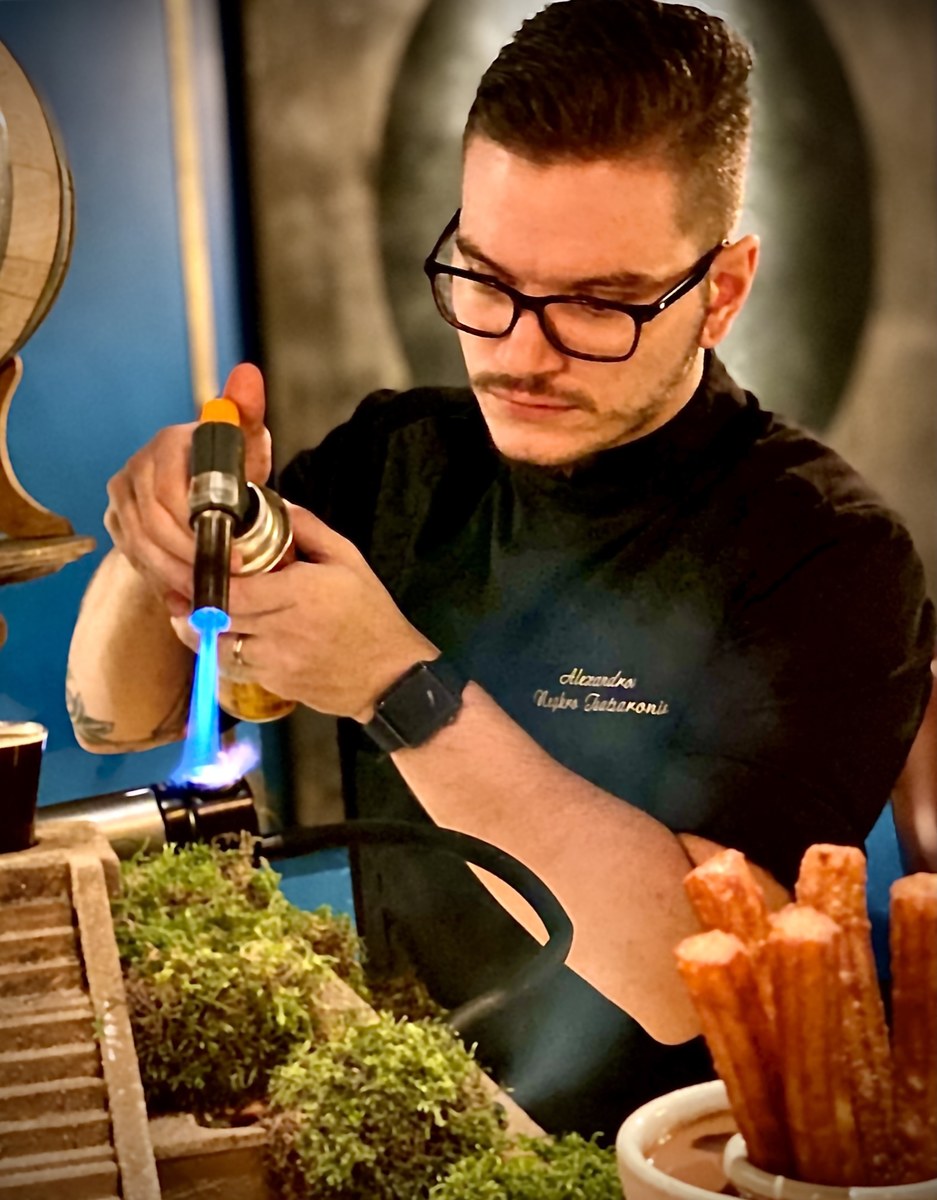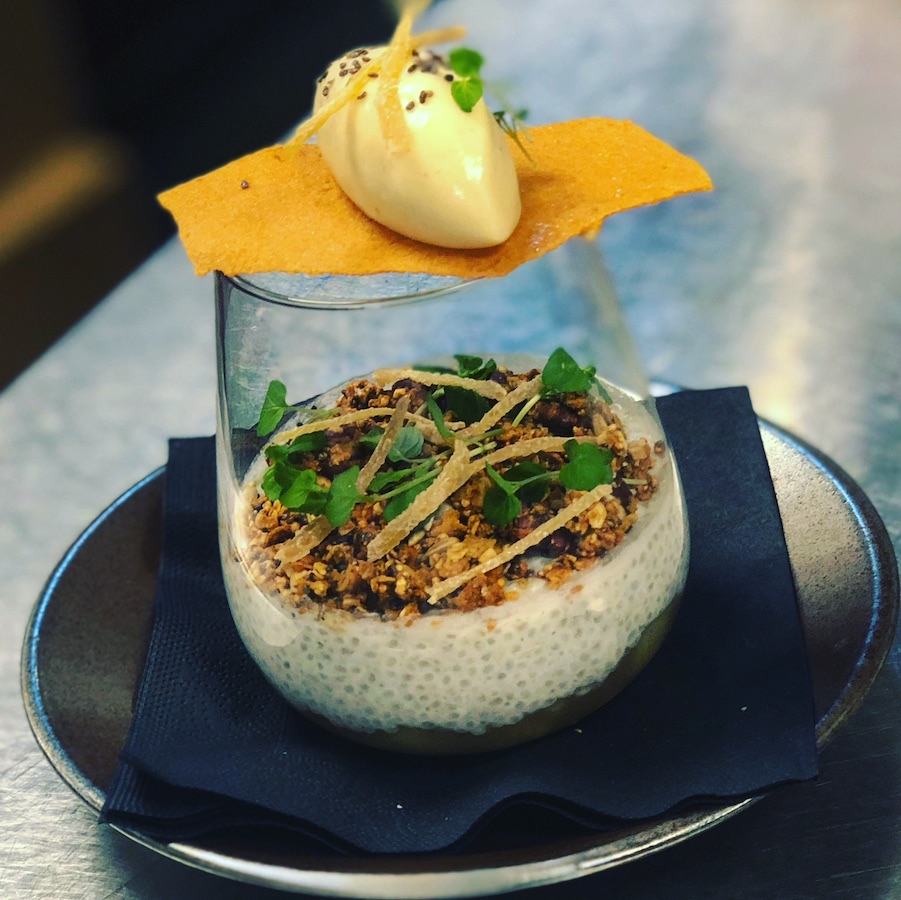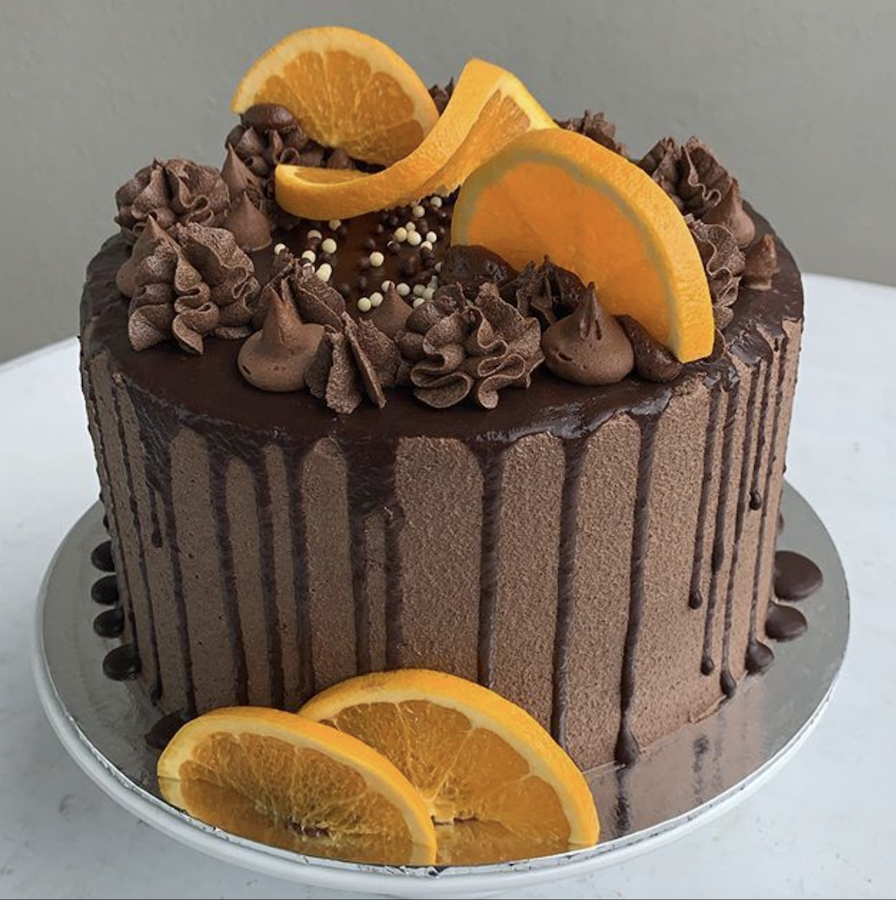DUBAI: Chef Alexandros Negkro Tsatsaronis is the executive pastry chef at COVA and Sarabeth’s in the Bujairi Terrace in Riyadh. Tsatsaronis was born in 1994 in Athens, and has worked in his home country as well as Turkey, France, and the UK, with stints at Michelin-starred restaurants including COYA, Chez Bruno, Nobu Matsuhisa, and Macakizi.
Here, the chef discusses the joy of cooking, his love for pasta and risotto, and his top tip for amateur chefs.

Tsatsaronis was born in 1994 in Athens. (Supplied)
When you started out, what was the most common mistake you made?
There were two: First, underestimating the experienced kitchen staff due to a sense of ego inflated by culinary school graduation. Second, mastering the delicate art of cooking fish and eggs demanded patience and experience. Learning to be humble and continuously improving was key.
What’s your top tip for amateur chefs?
Beyond having a great knife, meticulous preparation is the real secret. Clear thoughts, organization, and understanding the recipe thoroughly before you start are crucial. Precision matters — especially in pastry, where even a gram can make a significant difference.

(Supplied)
What one ingredient can instantly improve any dish?
Salt is the unsung hero. Whether in savory or pastry, it enhances flavors. In pastry, adding a pinch of salt to ingredients like chocolate and coffee intensifies their flavors, bringing hidden nuances to the forefront.
When you go out to eat, do you find yourself critiquing the food?
Dining out professionally is a double-edged sword for chefs. While I appreciate the details others might overlook, it can be challenging to fully enjoy the experience when your professional instincts are on high alert. Constructive criticism is valuable, but it’s essential to strike a balance.

Chocolate tart with caramlized hazelnuts. (Supplied)
What’s your favorite cuisine?
Mediterranean cuisines, with their emphasis on seasonal ingredients, hold a special place for me. If it were my last meal, I’d choose a juicy steak with asparagus, baby potatoes, and béarnaise sauce.
What’s your go-to dish if you have to cook something quickly?
Pasta or risotto. It not only offers a speedy solution but also brings back childhood memories of family comfort food.
What customer behavior most annoys you?
It’s frustrating when guests request extensive changes to a dish. As chefs, we pour our hearts into creating something special, and such requests can feel like an intrusion into our creative process.

Coconut chia pudding, nutty granola, candied ginger, roasted apple sherbet. (Supplied)
What’s your favorite dish to cook and why?
For me, the joy lies in the creative process of cooking — whether experimenting with new ingredients or improvising with what's available, the act of crafting something appetizing and unique is what I cherish most.
What’s the most difficult dish for you to get right?
Baking good bread is an ongoing challenge. It demands a deep understanding of the dough and constant adjustments based on variables like climate and humidity. Even after 15 years, mastering the perfect loaf remains a formidable task.
What are you like as a head chef? Are you a disciplinarian? Or more laid-back?
I’d say I combine laid-back leadership with a disciplined edge. It's a blend that adapts to the demands of the kitchen environment. There’s definitely an old-school discipline that surfaces when situations demand it.
Chef Alexandros’ chocolate orange cake

Chocolate orange cake. (Supplied)
INGREDIENTS
For the cake: 470g water; 125g cocoa powder; 780g sugar; 38g baking soda; 490g flour; 5g orange zest; 470g buttermilk; 245g eggs; 295g vegetable oil
For the ganache: 465g dark chocolate (70% cocoa solids); 465g heavy/double cream; 35g light brown sugar; 35g glucose syrup; 60g unsalted butter; 175g crème fraiche
For the drip: 100g dark chocolate (70% cocoa solids); 60g unsalted butter
Also: 3tbsp of cocoa powder for dusting the cake tins
INSTRUCTIONS:
1. Preheat oven to 345°F/175°C.
2. Place water and cocoa powder in a pan over medium heat and whisk until powder has completely dissolved and liquid is simmering. Cool for 10 mins.
3. Add the sugar, baking soda, flour and orange zest to a large bowl. Whisk until evenly combined.
4. Add the buttermilk, eggs and oil to a separate mixing bowl. Whisk to combine, then add into the bowl of dry ingredients. Whisk in the cocoa mixture.
5. Grease the bottom and sides of three 7.5 × 23cm cake pans and place a circle of parchment paper on the bottom of each. Add a tablespoon of cocoa powder into each pan and shake to coat the edges. Tip out any excess.
7. Pour the cake batter into the pans (900g of batter per pan). Bake for around 45 mins, or until a skewer comes out clean. Allow to cool for 5 mins, then carefully flip onto a wire rack. Cool for another 10 minutes, then wrap in clingfilm and place in fridge for at least 6 hours.
9. For the ganache, put the chocolate in a bowl and place over a pan of gently simmering water. Stir until completely melted.
10. Put the cream, brown sugar, glucose, and butter in a separate pan. Heat until steamy and the butter has melted.
11. Once the cream is hot, add slowly to the chocolate, stirring constantly, until all the cream has been incorporated. Don’t panic if it looks grainy at this point.
12. Add the crème fraîche, and hand-blend until smooth.
13. Cover with clingfilm and put aside for 2-3 hours, stirring occasionally.
14. Place your first chilled cake layer onto a cake board, on a rotating stand. Add a dollop of the ganache and use an offset spatula to smooth it out. Add the second cake layer and another even coating of the ganache. Add the third cake layer.
15. Add another dollop of ganache and spread smoothly over the top of the cake and around the edges. Use a hair dryer if needed to smooth any ganache that may have set.
16. Refrigerate for 20 minutes. Spread the remaining ganache over the cake, trying to keep the top as smooth as possible while leaving the outside relatively rough. Refrigerate for another 20 minutes.
17. To make the drip, add the chocolate and butter to a small bowl and melt over a pan of gently simmering water. Once melted, cool to 90°F/32°C.
18. Remove the cake from the fridge and pour the drip onto the middle of the cake. Working quickly, use an offset spatula to spread it to the edges until it drips down the side.
19. Allow to cool to room temperature before serving.



























